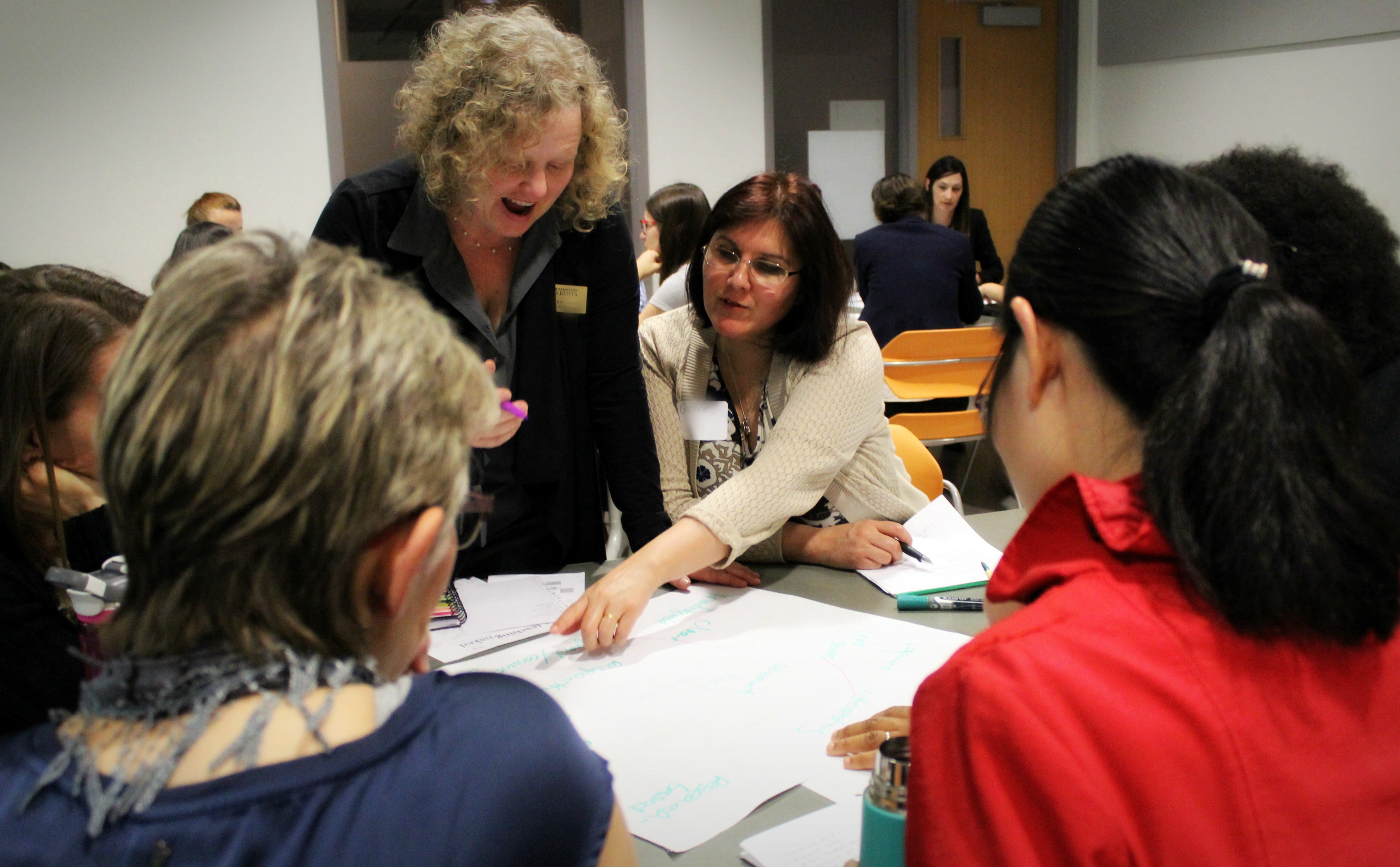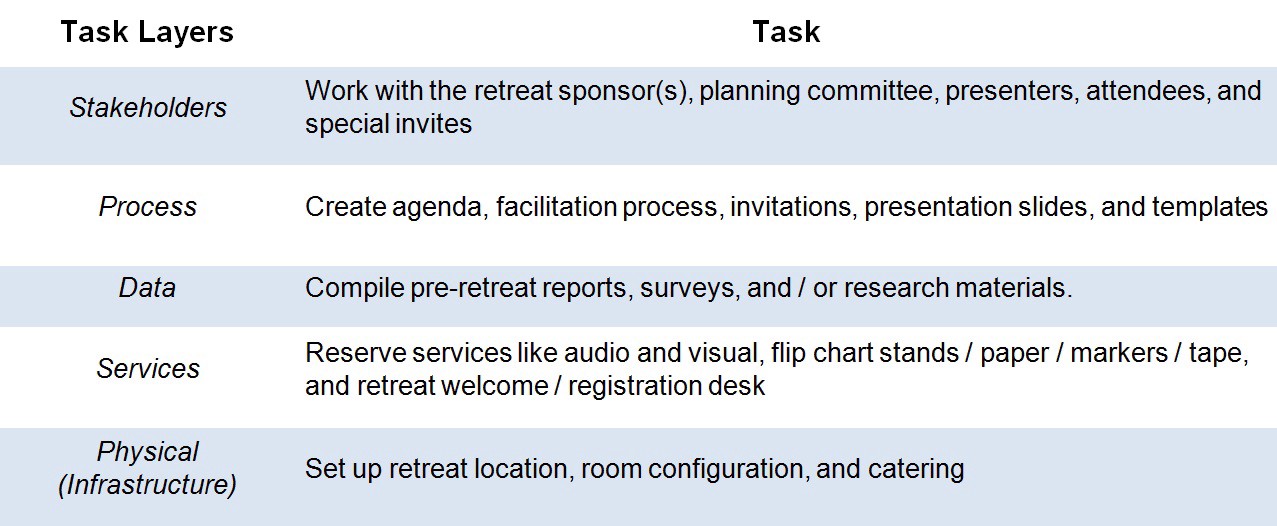
Retreats are a lot like downhill skiing. We all start at the top of the hill, head down the slope, try to stop in time, and hope to end with a positive experience so that we want do it again. Each retreat — like each run on the ski hill — is different, with varying levels of difficulty. And much like a ski instructor, a strong facilitator can help make the whole process smooth and enjoyable. So, how can you plan and facilitate an effective retreat?
A good retreat brings colleagues together to build relationships, engage in a process, create plans, and produce results. Everyone wants a productive session — one which leaves us feeling energized and accomplished. To achieve this as retreat facilitators, we need to invest time, prepare well, and facilitate effectively.
The following steps will help shape and guide your route through the retreat planning process:
Write down the purpose and desired outcomes.
Before you invest the first hour in planning, write down the purpose and outcomes for your retreat. Allow some time to connect with your stakeholders — the retreat sponsors, leadership committee, employees and colleagues — to define and clarify the purpose. The rest of your preparations will build on this base.
Keep in mindKeep in mind: the quality of output from retreat planning can be measured by the amount of backtracking due to false starts.
Create an activity task list.
Think of your retreat as a process, not an event. The table below breaks down retreat planning and facilitation into layers of tasks:

For a more detailed breakdown, take a look at this comprehensive Retreat Planning Guide.
Keep in mindKeep in mind: the opportunity to facilitate a retreat also represents a chance to improve your planning, organizing, facilitating and analyzing skills.
Keep a balance between presentations and activities.
Retreats that are mostly presentations and Q/A lose people’s attention quickly. They leave the attendees asking themselves, “Why am I here?”
We engage in a retreat through table exercises, workshops, and breakout sessions — so strike a balance between giving information and gathering knowledge. Strive to allot 50% of the agenda to actively engaging the attendees. After all, they have been invited to share their knowledge and experiences.
Keep in mindKeep in mind: the people that show up at retreats want to be informed, engaged, and have the opportunity to share their ideas.
Schedule an appropriate amount of preparation time.
Like runs on a ski hill, the complexity of a retreat can be classified as basic, intermediate, or advanced. For each class, there is a relationship between the amount of time to prepare (effort) for the retreat versus number of hours (duration) of the retreat.

Keep in mindKeep in mind: the last minute facilitator, who cannot find time to prep, will have few referrals.
Follow the process and protect the people.
Retreat day is not the time to make major adjustments to the agenda. Frequent walk-throughs with the sponsor or retreat leader will help to minimize last-minute changes.
As facilitators, we not only guide everyone through the retreat process, but also protect against sensitive situations, targeted challenges, and possible missteps. We need to manage icy spots through both preventions (our preparation and planning beforehand) and interventions (active management during the retreat). Ultimately, we want to create a safe space for everyone to participate.
Keep in mindKeep in mind: the mood of a retreat can change at an instant if a difficult situation is left unaddressed.
Monitor your progress through the agenda.
As the retreat progresses, monitor each minute and compare it to the agenda. You may need to make micro adjustments throughout the retreat to keep everything on track. Try to manage each agenda item so that you finish on time or a bit early.
Keep in mindKeep in mind: one of the characteristics of an effective facilitator is time management; give it your best.
Assess the retreat outcomes and process.
After the retreat, compile, analyze, and share your results. This might mean drafting a plan for your colleagues and employees, or preparing a final report for the retreat sponsors and/or leadership committee. You can focus on any or all of the following: output, insights, evaluation results, observations, and key learnings.
Keep in mindKeep in mind: retreat learnings are gold for continuous improvement in planning future retreats.
Grow your retreat planning and facilitation experiences.
Don’t forget to reflect on your own results from planning and facilitating each retreat. For the facilitator in you, sign up for more retreats, mentor others, and learn from each experience.
Keep in mindKeep in mind: as a facilitator, you guide attendees through a pre-determined process — they use that process to create outcomes.
Good luck with your next retreat!
Alan Day, Megan McDougald, and Dale Reesor are members of the Transformational Change Team in Human Resource Services. Together they help to mentor and coach leaders through change processes, facilitate strategic planning initiatives, and assist with change project management and transitions across the University of Alberta.